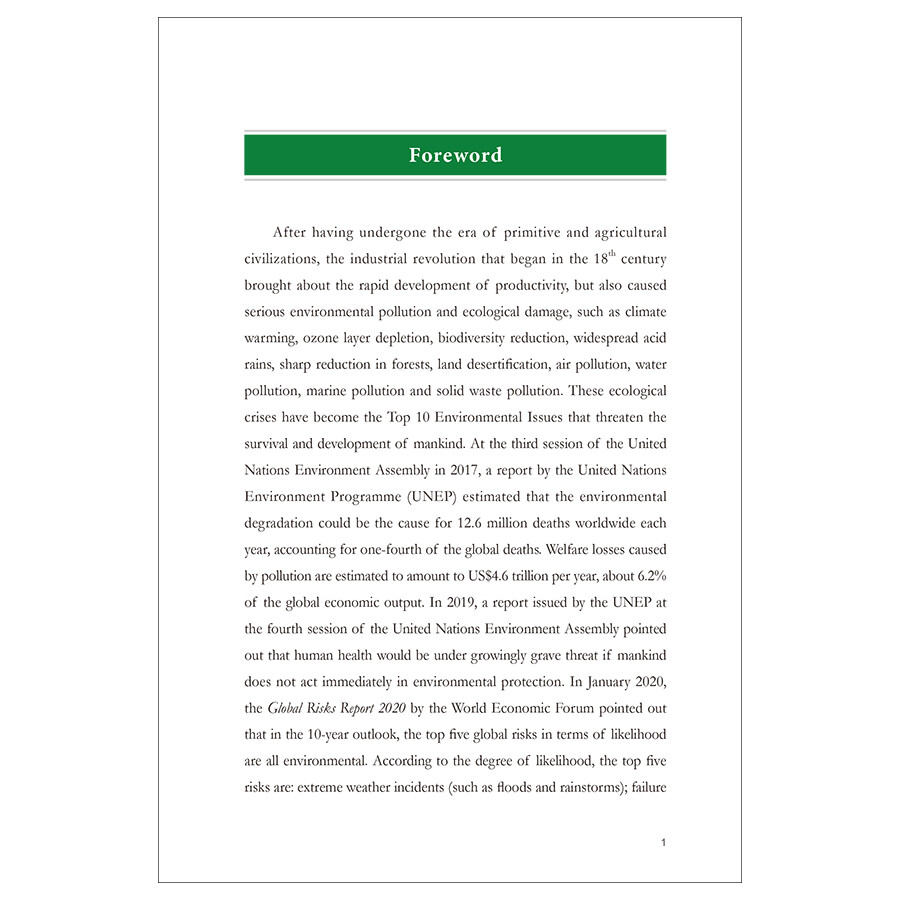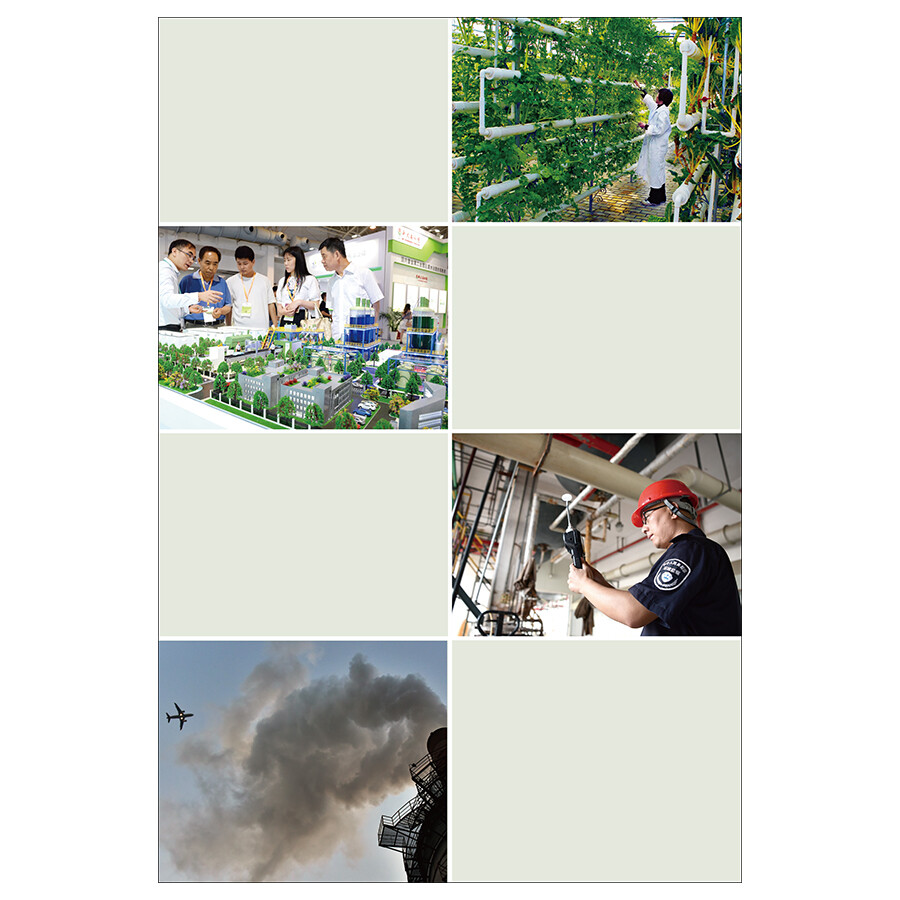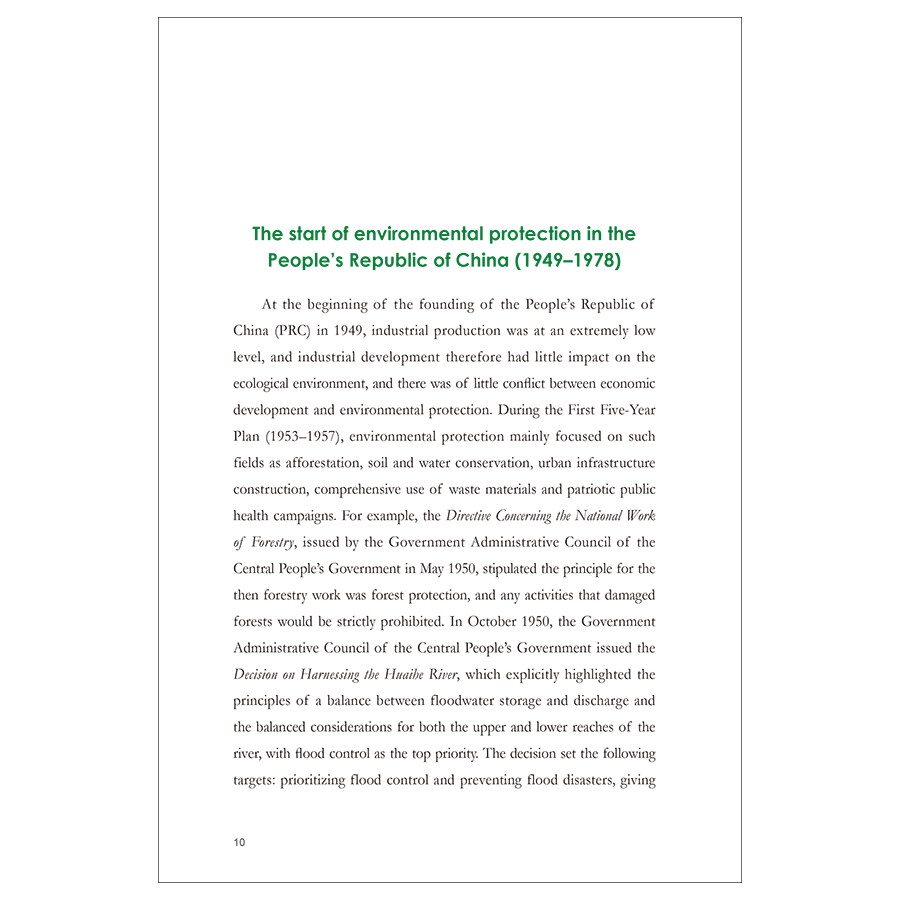Sample Pages Preview



 Preface
Preface
After having undergone the era of primitive and agricultural civilizations, the industrial revolution that began in the 18th century brought about the rapid development of productivity, but also caused serious environmental pollution and ecological damage, such as climate warming, ozone layer depletion, biodiversity reduction, widespread acid rains, sharp reduction in forests, land desertification, air pollution, water pollution, marine pollution and solid waste pollution. These ecological crises have become the Top 10 Environmental Issues that threaten the survival and development of mankind. At the third session of the United Nations Environment Assembly in 2017, a report by the United Nations Environment Programme (UNEP) estimated that the environmental degradation could be the cause for 12.6 million deaths worldwide each year, accounting for one-fourth of the global deaths. Welfare losses caused by pollution are estimated to amount to US$4.6 trillion per year, about 6.2% of the global economic output. In 2019, a report issued by the UNEP at the fourth session of the United Nations Environment Assembly pointed out that human health would be under growingly grave threat if mankind does not act immediately in environmental protection. In January 2020, the Global Risks Report 2020 by the World Economic Forum pointed out that in the 10-year outlook, the top five global risks in terms of likelihood are all environmental. According to the degree of likelihood, the top five risks are: extreme weather incidents (such as floods and rainstorms); failure of climate-change mitigation and adaptation; major natural disasters (such earthquakes, tsunamis, volcanic eruptions and geomagnetic storms); major biodiversity loss and ecosystem collapse; and man-made environmental damages and disasters.
The natural environment is the material basis for the survival and multiplying of mankind, and therefore protecting and improving the environment is the precondition for mankind to safeguard its own survival and development. Facing multiple crises such as resources shortage, energy consumption, biological degradation and environmental pollution, many countries have adopted various policies for green development, including the Green New Deal of the United States, the Low Carbon Transition Plan of Great Britain, the Green Economy and Social Change Strategy of Japan, the National Strategy for Green Growth of South Korea, the Multiannual Energy Program (PPE) of France, and the National Sustainable Development Strategy of Germany. The policies are intended to reduce the dependency on fossil energy for economic development, and to hold back and prevent further degradation of the ecological environment by elevating the economy to the path of clean and sustainable development......



